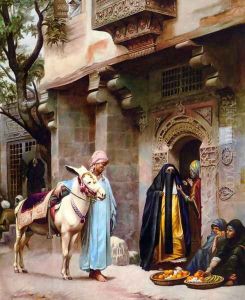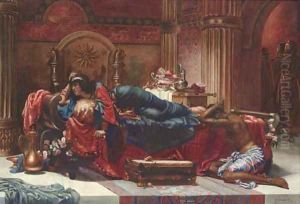H. G. Birchall Paintings
H. G. Birchall, born Hugh Goldwin Birchall in 1874, was a British artist known for his etchings and watercolors. His career, while short-lived due to his untimely death in 1917, contributed significantly to the British art scene during the late 19th and early 20th centuries. Birchall's work often reflected his fascination with landscapes and urban scenes, capturing the essence of British and European settings with a delicate yet precise touch.
Educated in the arts at prestigious institutions, Birchall honed his skills under the guidance of influential artists and teachers of his time. He was particularly known for his mastery in etching, a technique that requires not only artistic vision but also meticulous execution. Birchall's etchings garnered attention for their detailed portrayal of architecture and natural scenery, showing a keen eye for light, shadow, and texture.
Throughout his career, Birchall exhibited his work at various galleries and exhibitions, earning acclaim and recognition from critics and peers alike. His contributions to the art world were cut short by his death in 1917, at the age of 43. Despite his brief career, H. G. Birchall left behind a legacy of work that continues to be appreciated by art historians and collectors. His etchings and watercolors are considered fine examples of early 20th-century British art, reflecting the stylistic transitions of the period and showcasing Birchall's unique talent and artistic vision.

